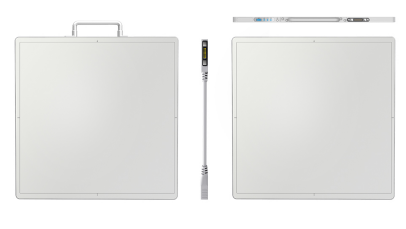Principle analysis of digital X-ray machine DR detector
DR detectors are the core components of digital X-ray machines. DR detectors can be divided into two types of energy conversion methods: indirect FPD and direct FPD.
1. Indirect conversion DR detector
The structure of the indirect FPD is mainly composed of a scintillator or phosphor layer plus an amorphous silicon layer (a-Si) with a photodiode function and a TFT array. The principle is that after the scintillator or phosphor layer is exposed to X-rays, the X-ray photons are converted into visible light, and then the amorphous silicon layer with photodiode function is converted into image electrical signals, and finally a digital image is obtained.
Indirect conversion DR detectors usually have the following structures:
①Cesium iodide (CsI) + a-Si (amorphous silicon) + TFT
②Sulfur oxidation (Gd2O2S) + a-Si (amorphous silicon) + TFT
③Cesium iodide (CsI) / Gadolinium oxysulfide (Gd2O2S) + lens / optical fiber + CCD / CMOS
④ CsI (Gd2O2S) + CMOS
2. Direct conversion flat panel detector
The direct conversion DR detector is mainly a DR detector composed of an amorphous selenium layer (a-Se) and a thin film semiconductor array (TFT).
Newheek specializes in the production and sale of X-ray machines and spare parts, if you are interested in digital tablet detector, please contact us!

Author:肖恩